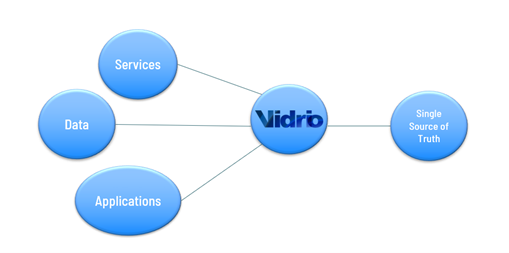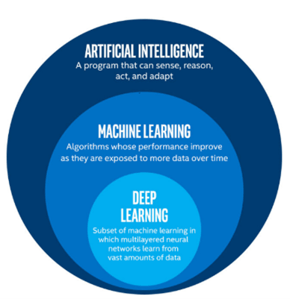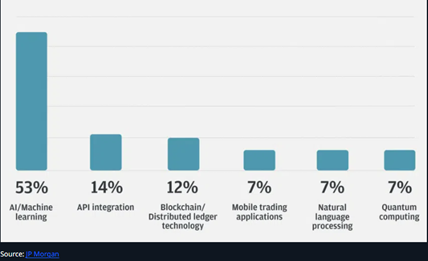Vidrio details the finer points of AI and machine learning for allocators, and where the future is headed as we further leverage human expertise and software.
By: David Barry, Director of Marketing, Vidrio Financial
Many leading technology giants are considering their future steps carefully into Artificial Intelligence (AI). At Vidrio, our own efforts go beyond implementing AI as a simple productivity tool. We’re building a solid AI foundation that is like a luxury self-driving car, with the added benefits of streamlining organizational costs and passing the savings along to our strategic allocator clients.
Overall, what does the AI puzzle mean for institutional allocators and Vidrio clients that reap some of the more positive benefits of AI as we move through this year? We begin by defining AI or generative AI, as it relates to the world of finance: Generative AI, is an AI that can be used to create new content, including audio, code, images, text, and simulations. It can be leveraged for innovation, which could open paths to improved business models, and applications.
Vidrio Test
We took this definition a step further and decided to test a basic level question through ChatGPT on the topic of AI and Institutional Investing, the question: How do you think artificial intelligence will impact institutional investing? The answer that it gave amounted to the following summary:
- A significant impact on institutional investing - by streamlining the investment process and allowing investors to make more informed decisions faster.
- It can also be leveraged to analyze larger amounts of data and identify patterns and trends not visible to the human eye.
- AI can also be used to automate the execution of trades, allowing institutional investors to take advantage…..
Excluding the fact that these are basic, common-sense answers, we also noticed that a full reply in bullet # 3 quickly fell off a cliff, something that most institutional allocators would not like to see when it comes to data calculations and missing analytics through their own AI solution or provider. Based on this test alone, AI has a bit of work ahead.
In our view, allocators must be able to trust the data especially when it’s being pushed or pulled into any AI system, otherwise the data support system quickly suffers a breakdown, it’s the adage of garbage in, garbage out. At Vidrio we streamline our AI model and machine learning discussion a bit further into the following diagram:

From this diagram you can see how Vidrio acts as the bridge between data, services, and applications to provide allocators with a trusted single source of truth to improve reporting and data transparency. However, the data journey only begins here, once you have that source of truth, the constant enrichment and machine learning as the complexity of your portfolio grows over time, is needed to maintain accuracy.
Is AI the same as Machine Learning?
Many use the terms AI and Machine Learning interchangeably but that’s not completely accurate. Machine Learning is a subcategory of AI that focuses on the use of data and algorithms to imitate the way that humans learn. The software behind these algorithms can take this “training data” and apply it to predictions or decisions as it relates to the end goals of allocation decisions.
Vidrio takes it a step further and creates a ‘deep learning’ subset of our machine learning where multilayered neural networks are firing to learn from the vast amounts of data that the AI is processing on daily, monthly, quarterly, or annual basis. Visually, this can be imagined through the following diagram:

Source: Stack Exchange
On average, Vidrio monitors approximately $120-$130 billion of assets allocated and monitored on its platform running through our AI models. This data spans ~1,250 hedge funds and several hundred private asset funds to provide allocators with advanced level analytics for risk, exposure, cashflow and performance. In a recent blog entry, we highlighted the moves from a traditional 60/40 portfolio to an allocation of 50/30/20, you can read more on that here, but as these movements happen machine learning can kick in and enrich the data insights according to your investment teams allocation decisions.
Through a JP Morgan study at the beginning of this year, researchers determined that institutional investors are clearly looking at AI and machine learning as a key component for the future of the industry. According to the research, this is up 25% over the previous year and can be visualized against things like blockchain investments, natural language processing, quantum computing and more. See the chart below.

In a recent story and accompanying survey from LinkedIn, 70% of top companies across the social network reported the benefits of engaging AI on their businesses. PricewaterhouseCoopers was interviewed as part of the coverage and mentioned that the shift to AI is really significant and creating breakthroughs across document processing that can lead to deeper analytics.
“We believe we were one of the first pioneers to incorporate AI and machine learning into our algorithms and workflows in order to help allocators”. said Mazen Jabban, Chairman and CEO, Vidrio Financial. “At Vidrio we consider the AI implementation and its execution in a series of steps, that create milestones and trigger points that lead to an increase savings in time, and a reduction of costs for our clients. Currently, we view Vidrio as the perfect blend of software plus human expertise. Our machine learning continues to improve insights across a variety of multi-asset class portfolios with the ultimate goal of streamlining human intervention, only when the machine hits a roadblock in its learning curve. It’s really an exciting time for Vidrio and for the field of AI, and as portfolio complexity grows, investment teams should be inquiring how to streamline processes (via AI) so they can refocus efforts on manager due diligence and allocation studies,” he added.
Overall, the goal with AI and machine learning is the streamlining of business functions and the ability to refocus the human element on areas that the machines either don’t have access to or tasks they can’t perform. However, in our view that human element never fully disappears, it simply evolves to a point where humans will assist the machines, intervening only when the machines can’t define a clear path forward.
Would you like to learn more about Vidrio Financial and how we’re leveraging the latest AI and machine learning strategies to innovate your investment analysis? Reach out today and see how we can assist in your document management/data collection, research, reconciliation, performance, exposure, and risk reporting, and more.






